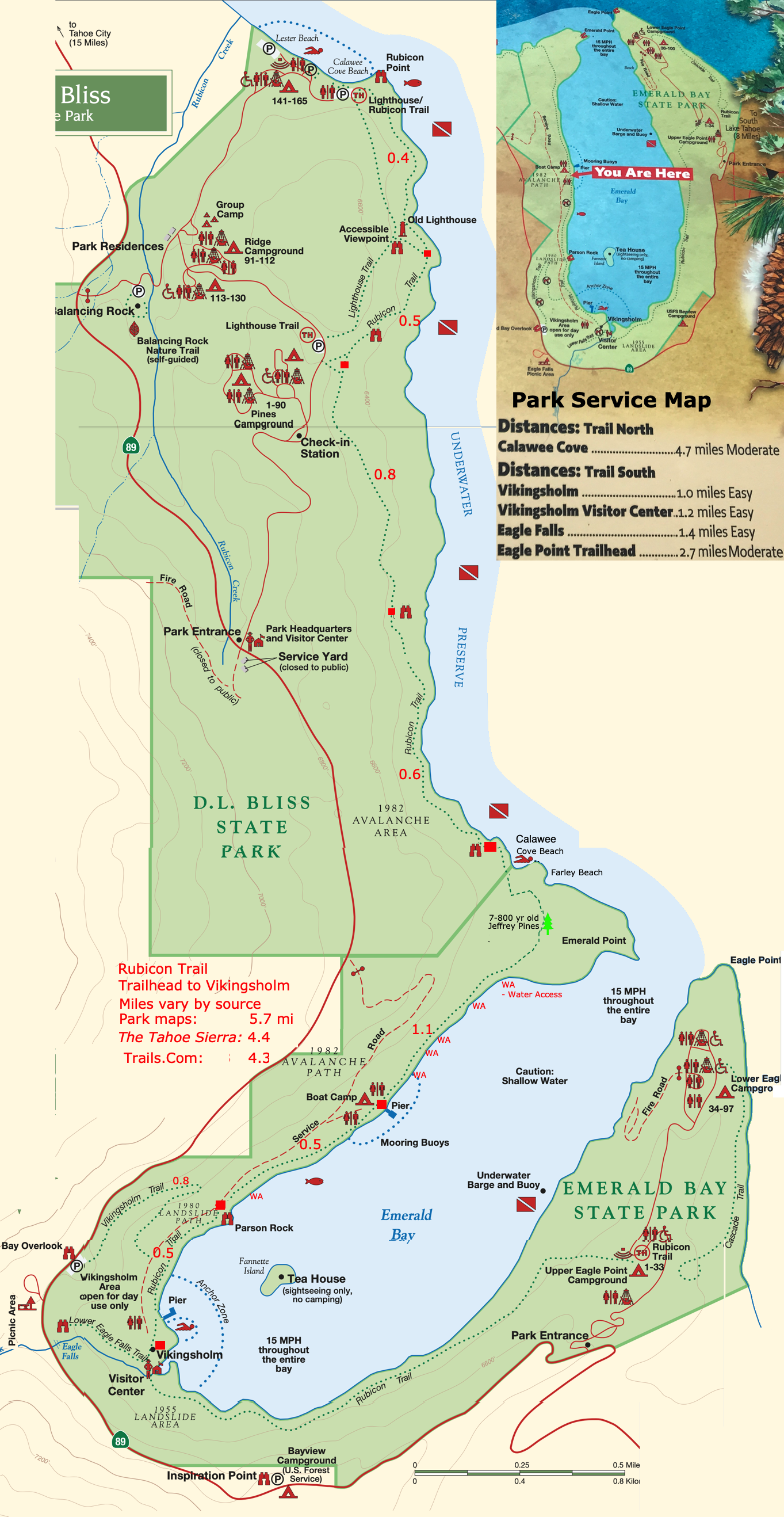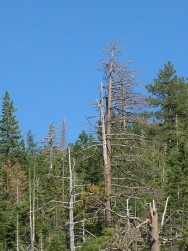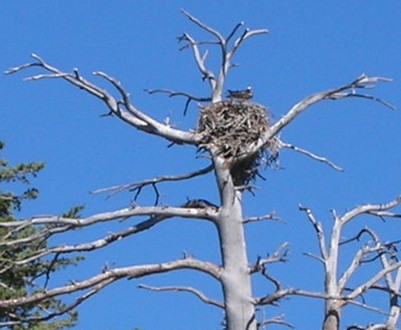
Zoom out
Source: www.parks.ca.gov/pages/505/files/BlissEmeraldBay.pdf
Park Service Map
Zoom out to Tahoe SW | Topo for Eagle and Velma Lakes
Balancing Rock
 The granite of this large rock began weathering more rapidly at the joint plane, an extensive horizontal crack that is easily seen at its "waist".
The granite of this large rock began weathering more rapidly at the joint plane, an extensive horizontal crack that is easily seen at its "waist".
The overlying rock weighs around 130 tons and is now balanced on the rock below.
Southwest of the group campground.
Access from Hwy 89 - paved parking area just south of access road near the north end of the park.
Underwater Park
Lester Beach (Vehicle access & Parking)
Deep diving off of the Rubicon Wall, south
of Lester Beach in D.L. Bliss State Park, has
become an exceptionally popular activitiy
for advanced divers. Due to the clarity of
the water and the spectacular geologic
formations, the site ranks as one of the
world’s most beautiful dives
Rubicon Trail
Osprey - Bald Eagles:
There are several Eagle and Osprey nests around Emerald Bay and along the Rubicon Trail. An Osprey nest at the top of a dead tree down by the water is visable from the Rubicon Trail a little way after you go by the cliffs.
A large eagle nest (which may be populated by Ospreys) is at the north entrance to Emerald Bay. It is visable by boat and from the opposite side at Eagle Point, but not from the Rubicon Trail.
Nests are at the top of large diameter dead topped trees and snags with robust
branches.
Many of the nests are not populated.
In 2008 there were 7 nesting pairs, but only 4 survived. Others may have been blown away or a horned owl may have stolen the eggs. On Aug. 4th there were still two inhabited Osprey nests just across the bay from the boat camp.
They are best observed with a high powered scope from the opposite shore.
A 2004 TRPA Draft Environmental Impact Statement states:
Bald eagle population ranges between four to 20 individuals annually (USDA, 1998a).
Historical records (dating back to 1874) indicate that bald eagles nested in the Lake Tahoe
region (Orr and Moffit, 1971). In 1997 and 1998, a pair of bald eagles nested at Emerald
Bay and produced two fledglings each year. Prior to 1997, a pair of nesting bald eagles was
recorded in 1970 and 1971 at Emerald Bay and an unsuccessful nesting attempt was made
in 1996 at Marlette Lake. Currently, the USFS and TRPA have identified two nest sites that
have had at least some activity in the last three years and have delineated disturbance zone
buffers (see Figure 12.1). According to nest observations at the Emerald Bay site (in 1998),
bald eagles likely lay eggs in early May (USFS, 1998a), incubate for 34-36 days (mid–June)
(Ehrlich et al., 1988) and fledge young of the year around late August to early September
(USFS, 1998a) in the Region. Recent successful nesting by bald eagles in the Region
indicates that the Lake Tahoe Shorezone serves not only as suitable wintering habitat but
also as year-round habitat for eagles.
See Bald Eagle Perch areas and Osprey Nests.
|  Hiking
Hiking
 Trails
Trails
 D. L. Bliss & Emerald Bay State Parks Trail System
Contact
D. L. Bliss & Emerald Bay State Parks Trail System
Contact
 Hiking
Hiking
 Trails
Trails
 D. L. Bliss & Emerald Bay State Parks Trail System
Contact
D. L. Bliss & Emerald Bay State Parks Trail System
Contact
 The granite of this large rock began weathering more rapidly at the joint plane, an extensive horizontal crack that is easily seen at its "waist".
The granite of this large rock began weathering more rapidly at the joint plane, an extensive horizontal crack that is easily seen at its "waist".
